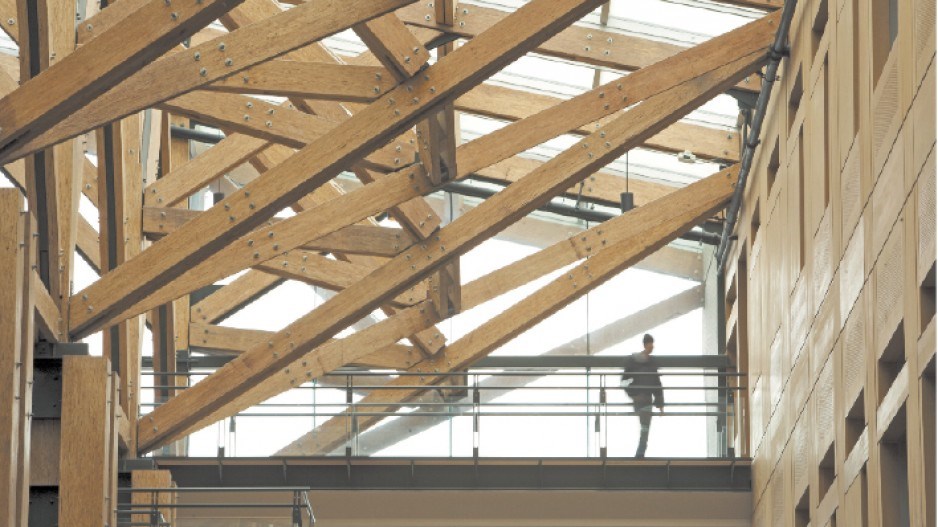It’s as strong as steel. It takes less energy to make and has a lower carbon footprint. In the future, our skyscrapers might be made of it.
The material is none other than good old wood – but not two-by-fours. High-tech wood, known as engineered wood, has advanced to the point where it can compete with steel and concrete.
“Wood is more flexible, and with more engineered products that have come out in recent years, wood can handle larger spans,” Paul Lansbergen, vice-president of the Forest Products Association of Canada (FPAC), told Business in Vancouver.
FPAC has partnered with Vancouver-based wood researcher FP Innovations in a new initiative to help the forest products industry get a piece of the $8 trillion global construction market.
Lansbergen, who was in Vancouver recently to meet with B.C. timber companies, said the Canadian wood-products sector needs to get up to speed quickly to take advantage of rapid changes in international construction.
“China and India are growing so fast, they’re going to be No. 1 and 2 by 2025,” said Lansbergen. “The U.S. drops in relative ranking, more so in commercial and infrastructure than in residential, but other economies start picking up and breaking into the top 10.”
Those countries also include Mexico, Venezuela and Japan. But to compete in those countries, Canadian wood needs to look past residential single-family buildings, its traditional stronghold, and prove that wood can be used in commercial buildings, mid-rises and infrastructure projects.
“The Chinese culture has always been to build with concrete, but … we have been successful in getting them to build wooden roofs,” said Lansbergen. “That’s allowed more ventilation in the top floor, and it’s more comfortable living.”
At home and abroad, building codes restrict the height of wood buildings, something that Lansbergen said can change only by proving the buildings can withstand fire and earthquakes.
The industry is making some headway. In Canada, wood-building heights will be increased to six storeys by 2015 from the current four. Proponents of wood construction, like Vancouver architect Michael Green, say buildings could rise as high as 30 storeys (see sidebar).
“Those aren’t going to be a mainstay,” said Lansbergen. “I think there’ll be a lot more demand for four, six, eight, maybe up to 10 storeys.” •
The story of wooden skyscrapers
Vancouver architect Michael Green is an advocate of building tall with wood. He says new products now make wooden skyscrapers as high as 30 storeys possible.
On February 7, Green presented his ideas in a TED talk at Long Beach, California.
“Engineered products made of small trees glued together to make huge panels … change the scale of what’s possible,” Green said in his TED audition talk in June 2012.
For Green, climate change is the most compelling reason to use wood.
“Concrete and steel are both huge energy footprint materials and huge carbon dioxide footprint materials,” he said. “We haven’t really had an alternative, until now … one cubic metre of wood stores carbon, instead of emitting it.”




